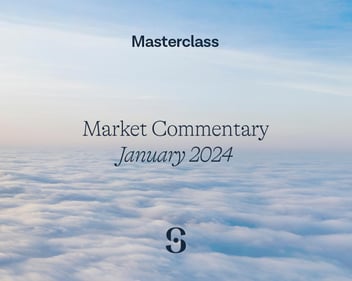Investors are facing one of the most chaotic and unpredictable macroeconomic periods since the Global Financial Crisis of 2008.
After a decade of negligible inflation, 2022 has seen prices rise across developed markets at rates not seen for more than 40 years, reaching 9.4% in the UK last month, with no let-up in sight.
With further interest rate hikes looming as central banks aim to get inflation on leash, the risk of recession is becoming increasingly tangible. And though the fallout may appear similar, the current scenario is being met with an entirely different set of economic tools than those used during the financial crisis 15 years ago, which in turn presents a new set of challenges for investors.
With some variation, the major developed economies of the world all responded to that last great cataclysm with enormous stimulus packages. While governments resorted to different combinations of fiscal and monetary stimulus measures, the overall effect was to flood the global financial system with liquidity in the hope that recessions did not tip into depressions.
In the UK, monetary policy was the preferred tool to reflate the economy after the 2008 crash, and the Bank of England simultaneously lowered interest rates to historic lows and began a program of bond buying (known as quantitative easing) in order to inject cash into the economy.
The huge influx of fresh money into the economy provided the perfect conditions for investors to buy into any major stock market index fund or ETF and, in many cases, watch the value rise on the back of seemingly endless money creation from central banks. Worryingly, these astonishing gains in major equity market indexes during the decade that followed the Global Financial Crisis came against the backdrop of relatively weak economic growth.
This time around, with inflation approaching double-digit levels globally, the tightening of global monetary policy is putting an end to the historically low levels of interest rates, meaning that there will not be the cheap – or for the past decade, almost free – money available to continually inflate equity prices.
Meanwhile, the spending power of consumers is at mercy of the resurgence of inflation, which will dampen economic growth. This immobilising concoction of low growth and high inflation, which is starting to bear the hallmarks of ‘stagflation’, is set to present navigation challenges for investors unfamiliar with the terrain.
More directly, investors expecting to employ the same index-holding strategies that they have perhaps profited from over the last decade are likely to be disappointed. Rather, the shrewd investor will have already recognised that agility and diversification could serve them well in riding out the turbulence and cushioning inflationary impacts.
Seeking alternatives
Against the current macroeconomic conditions, alternative investments will likely have an increasingly significant role to play, as inflationary pressures appear far from transitory.
Indeed, as an asset class, alternatives have been exerting a growing influence on the investment landscape over the last decade, with their value expected to reach $23.21 trillion by 2026, according to estimates from Preqin This may be an understatement given the expanding appetite to diversify beyond stocks and bonds.
While these investments can carry additional risks in comparison to the safety of index-tracking funds or other relatively low-risk traditional investment vehicles, their momentum has been bolstered by the need for investors, both institutional and individual, to diversify their portfolios to achieve two objectives.
Firstly, the rise in rates and weak economic outlook poses a significant threat to the growth of public markets – alternative investments offer insurance against such a decline. Secondly, the changing macroeconomic conditions demand a more aggressive approach to maximise capital appreciation.
In a context where the gains from traditional equity markets are almost certain to be much more subdued over the coming years, alternative assets provide a much-needed source of growth potential.
Real estate: strong fundamentals persist
It is well documented that real estate typically performs well during periods of elevated inflation. Indeed, against the volatile macroeconomic backdrop of 2022, the resilience, income-yielding and capital appreciation benefits of this asset class stand out all the more sharply.
While real estate will not be immune to these headwinds, appetite among investors remains robust, with data from Knight Frank revealing global investment volumes in Q1 2022 were 30% higher than 2021’s level over the same period, although the pace may subdue as the year progresses.
Naturally, investors will be contending with rising financing costs; however, the positive long-term correlation between inflation and real estate cannot be ignored. Indeed, property assets can play an important role in the portfolio of long-term investors looking to secure some level of predictability in their investment appreciation over time.
Further, demand in the UK housing market continues to outstrip supply, pushing up prices and providing ample potential for strong returns. Indeed, average UK house prices have risen by over 61% in the last 10 years, in the same period, growth in the UK stock market has been almost half that value.
Welcoming ordinary investors
While institutional-grade property deals have previously remained elusive to the ordinary investor due to the enormous buy-in price, positively, the barriers to participation in such deals are being lowered by huge innovation across the prop-tech industry.
Such investments were typically only accessible to the top 1% who control 45% of global wealth, echoing the age-old sentiment ‘you’ve got to have money to make money’.
With inflation representing the most significant stealth threat to returns across asset classes, the increasing democratisation of the property investment landscape may well prompt investors to rethink their own rulebooks.




















